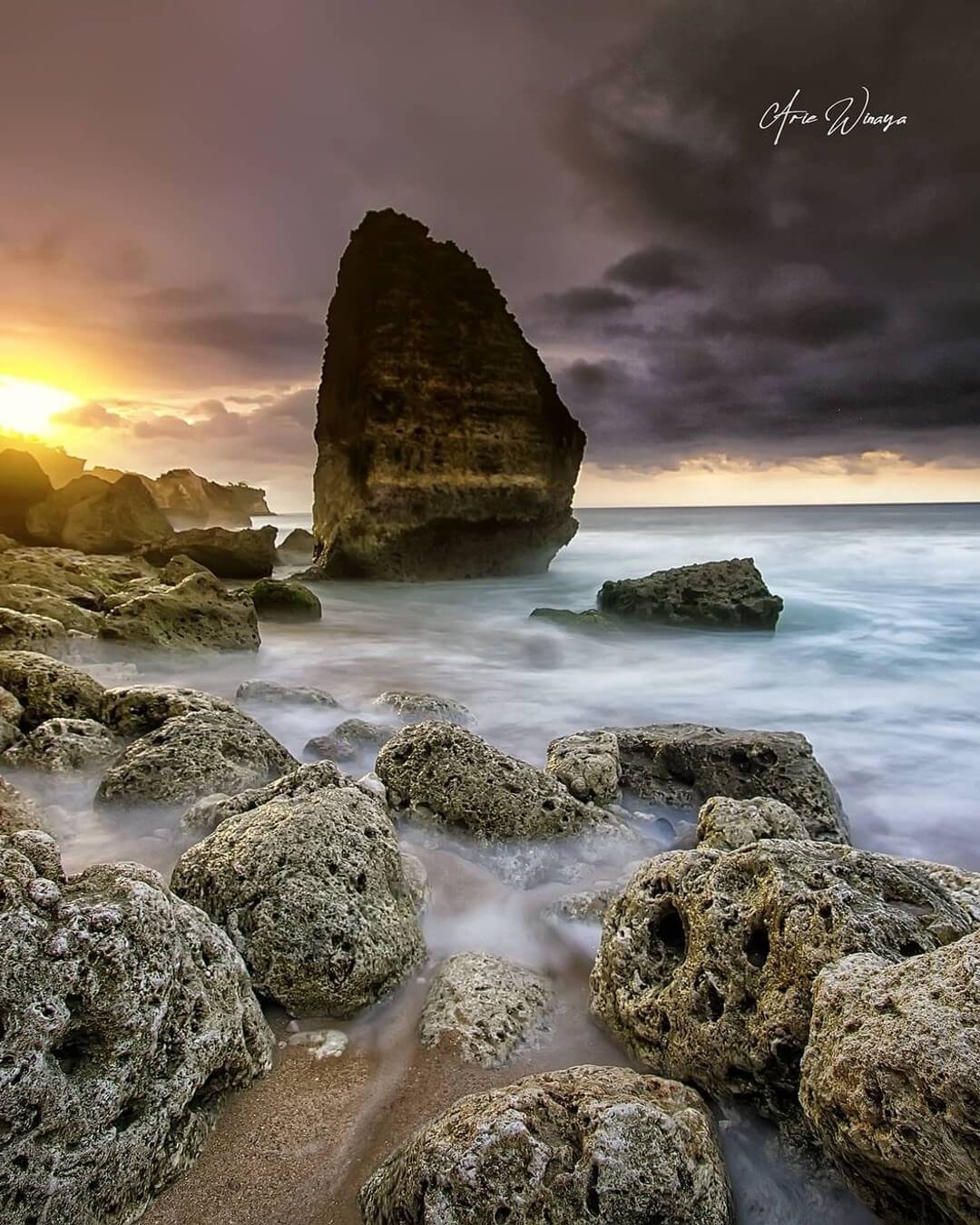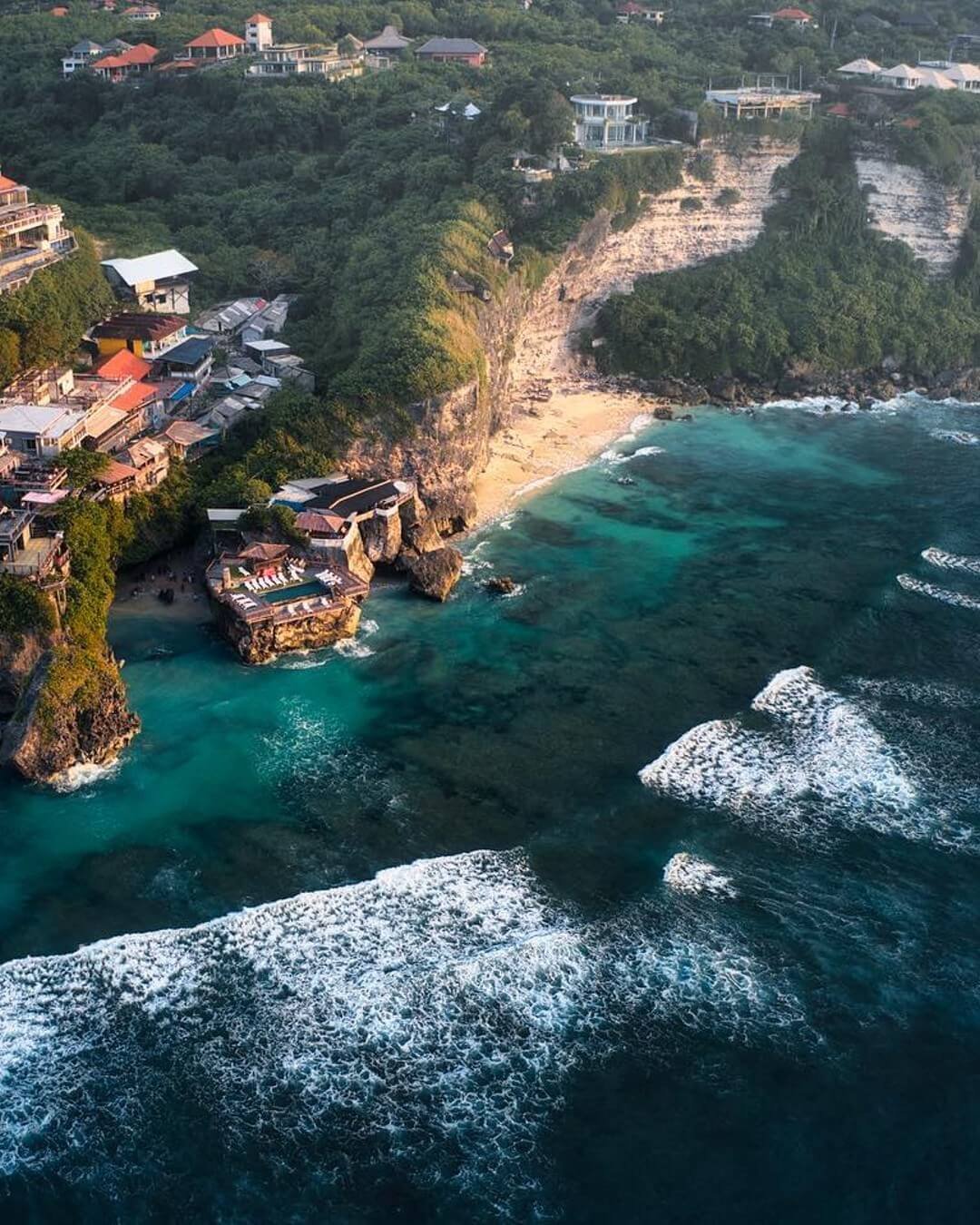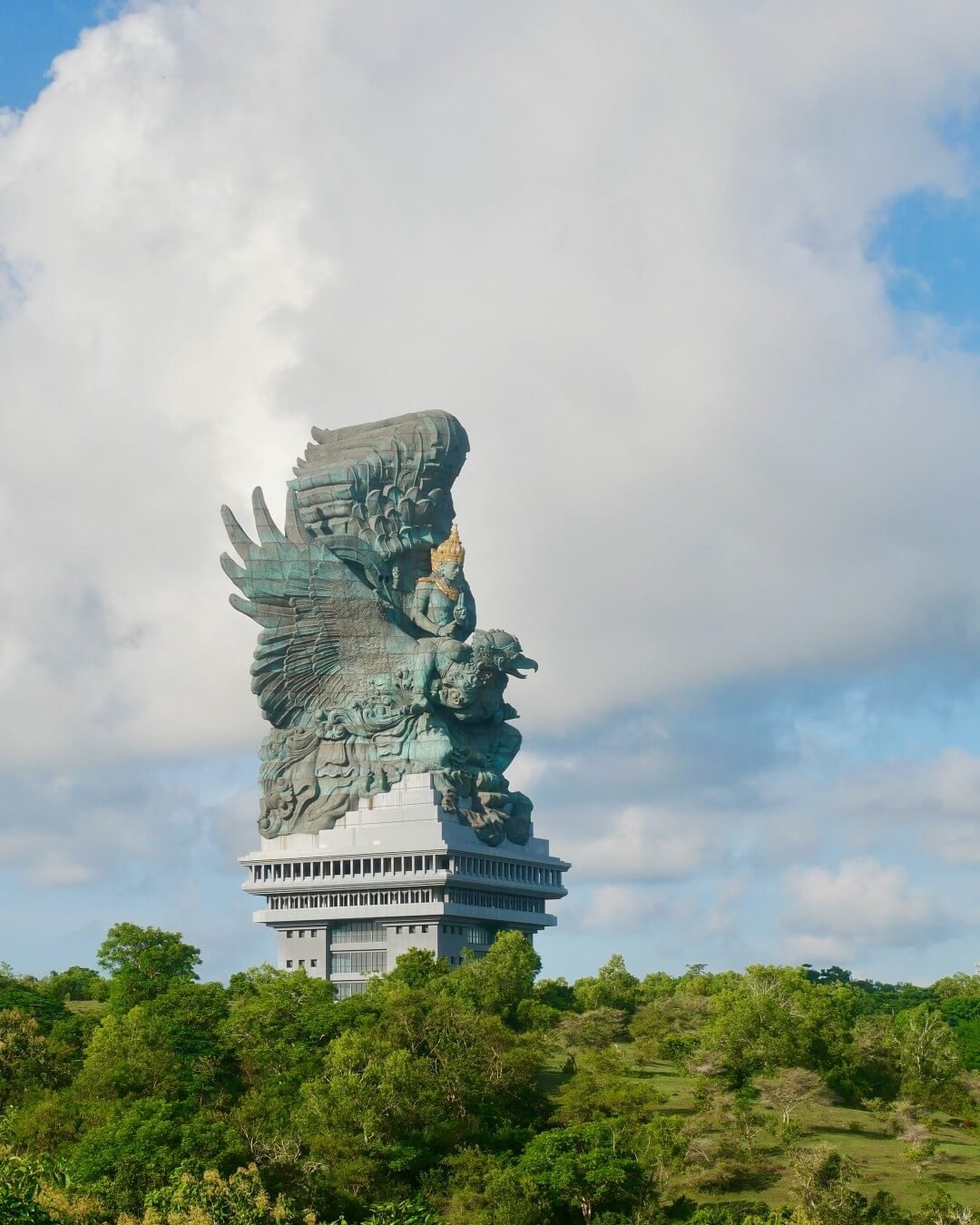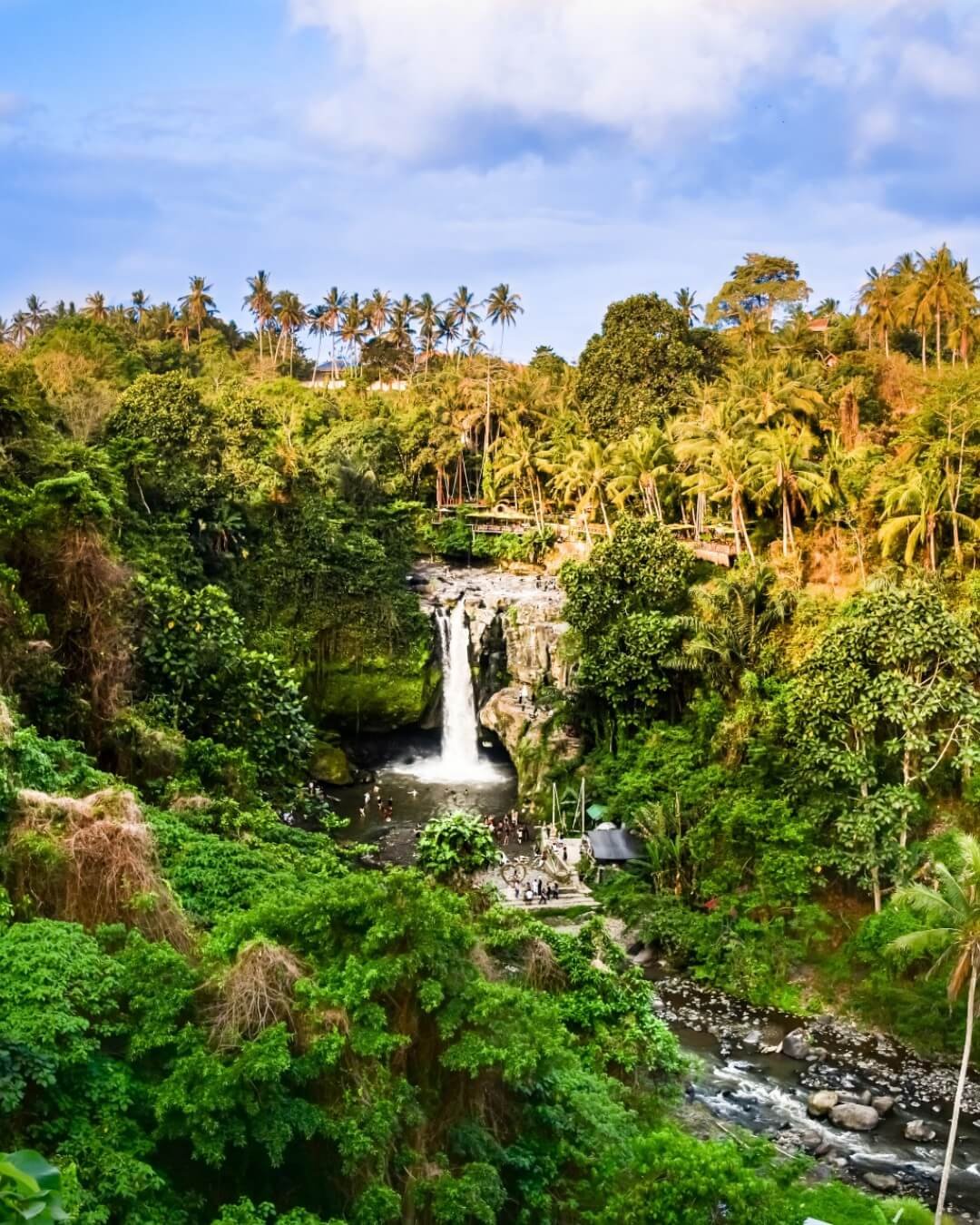The Garuda Wisnu Kencana Cultural Park: A Bali Kulture Park
Indonesian Name: Taman Budaya Garuda Wisnu Kencana
The Garuda Statue at Garuda Wisnu Kencana Cultural Park | Image: Yudi Haryasa
Table of Contents Show
Buy tickets and skip the line
Introduction
Situated in the southern part of the Indonesian island of Bali, the Garuda Wisnu Kencana Cultural Park (GWK) is a popular tourist destination that combines cultural, artistic, and natural elements. The park is named after the mythical Garuda, a giant bird-like creature that is revered in Hindu mythology as the mount of the god Vishnu, and Wisnu, one of the main deities in Hinduism. The park's main attraction is a towering statue of Garuda Wisnu and is said to be the tallest statue in Indonesia.
Address
The Garuda Wisnu Kencana Cultural Park is located at Jl. Raya Uluwatu, Ungasan, Kuta Selatan, Kabupaten Badung, Bali 80361, Indonesia. (See on Google Maps)
Location
GWK is located in the southern part of Bali, about 20 kilometers from the popular tourist destination of Kuta and about 30 kilometers from the capital city of Denpasar. The park is situated on a hilltop overlooking the Indian Ocean, offering panoramic views of the surrounding area.
Address & Phone Number of Nearest Hospital for Emergency
In case of an emergency, the nearest hospital to the GWK is the Bali Med Hospital, which is located at Jl. Bypass Ngurah Rai, Kuta, Kabupaten Badung, Bali 80361, Indonesia. The hospital can be reached by phone at +62 361 761 263.
Get your Bali travel insurance sorted to avoid high medical costs in the event of an emergency.
Three Key Reasons To Visit
1. The Garuda Wisnu Statue: The main attraction of the GWK is the towering statue of Garuda Wisnu, which is said to be the tallest in Indonesia, standing at a height of 121 meters. The statue depicts the mythical creature Garuda, a giant bird-like creature that is revered in Hindu mythology as the mount of the god Vishnu, holding the god Wisnu on its back.
2. Cultural and Artistic Displays: The GWK is more than just a tourist attraction; it is also a cultural center that showcases the rich history and traditions of Bali. The park features various cultural and artistic displays, including traditional Balinese dance performances, music, and art exhibits.
3. Natural Beauty: The GWK is set on a hilltop overlooking the Indian Ocean, offering stunning panoramic views of the surrounding area. The park is also home to a lush tropical garden with a variety of plants and flowers, making it a perfect spot for nature lovers.
History, Myths and Legends
The concept of the GWK was first proposed in the 1990s, with the aim of creating a cultural and tourism destination that would showcase the rich history and traditions of Bali. The park's main attraction, the Garuda Wisnu statue, is based on the mythical creature Garuda, which is revered in Hindu mythology as the mount of the god Vishnu. According to legend, Garuda was created by the gods to serve as their messenger and was granted immortality in return for his service. In Hindu mythology, Vishnu is one of the main deities and is revered as the preserver of the universe.
According to Wikipedia, the construction of the Garuda Wisnu Kencana Cultural Park (GWK) and its towering statue of Garuda Wisnu was not without controversy. Some religious authorities on the island of Bali expressed concerns that the massive size of the statue might disrupt the spiritual balance of the island and that its commercial nature was inappropriate. However, other groups supported the project, viewing it as a potential new tourist attraction on barren land.
The park has had numerous large-scale events, including rock concerts, dance music festivals and - most recently - On 14 November 2022, during the G20 Bali summit, The President of Indonesia, Joko Widodo, hosted the leaders of the G20 at the park's Lotus Pond area for the welcoming cultural dinner.
What To Expect When Visiting
When visiting the GWK, visitors can expect to see the towering statue of Garuda Wisnu. The park also features various cultural and artistic displays, including traditional Balinese dance performances and music, as well as art exhibits. There is also a lush tropical garden with a variety of plants and flowers, as well as panoramic views of the surrounding area.
The GWK's statue, designed by Nyoman Nuarta, stands at an impressive height of 121 meters (397 feet), making it nearly 30 meters (98 feet) taller than the Statue of Liberty in the United States.
The completed statue weighs 4,000 tonnes and is made of copper and brass sheeting with a stainless steel frame and skeleton, as well as a steel and concrete core column. The outer covering of the statue measures 22,000 square meters (240,000 square feet) and its crown is covered with golden mosaics. The GWK was completed on July 31, 2018 and was inaugurated by Indonesian President Joko Widodo on September 22, 2018.
The Venues at the Garuda Wisnu Kencana Cultural Park
Lotus Pond
The Lotus Pond is a grand and majestic plaza located within the Garuda Wisnu Kencana Cultural Park (GWK). Situated between limestone walls and crowned by the statue of Garuda, the expansive plaza offers good access, excellent acoustics, and can hold up to 7,500 people, making it a popular choice for concerts and other events. The Lotus Pond gets its name from the lotus flower, which symbolizes beauty, prosperity, and fertility and is often depicted in the hand of the god Wisnu. The lotus flower has its roots in the mud but blooms into a magnificent flower above, making it a rich symbol of humanity and the cosmos.
Plaza Garuda
Plaza Garuda is a picturesque plaza located within the Garuda Wisnu Kencana Cultural Park (GWK) and overlooks the majestic Lotus Pond. Presided over by an immense statue of Garuda, the plaza is a popular setting for pre-wedding photographs and smaller events. In Hindu mythology, Garuda is the mount of the god Wisnu and represents loyalty, trustworthiness, and sacrifice. In Indonesian culture, the Garuda is revered as a symbol of bravery, wisdom, strength, and discipline.
Plaza Wisnu
Plaza Wisnu is a beautiful hilltop plaza located within the Garuda Wisnu Kencana Cultural Park (GWK) that offers breathtaking panoramic views of the island. The plaza is the perfect spot to catch the sunset and offers a peaceful, shady grove with a sacred well known as the Parahyangan Somaka Giri. Historically, the well is believed to have magical powers to heal illnesses and is visited by local Balinese seeking a cure for their ailments. Hindu priests often conduct blessings and ceremonies at the well, and visitors can join in the pageantry of ancient rituals during full moon.
Indraloka Garden
Indraloka Garden is a beautiful tropical garden located within the Garuda Wisnu Kencana Cultural Park (GWK). The garden is named after Indra, the Hindu god of thunder, rain, and lightning, and is inspired by the celestial gardens of Indra, which are seen as a kind of heaven on earth. The garden is fringed with golden frangipani and flourishing heliconia, making it an idyllic setting for weddings and small to medium-sized events. The garden also offers sweeping views of the island and the sparkling waters of the Indian Ocean, adding to its allure.
Plaza Kura-Kura
Plaza Kura-Kura is a picturesque plaza located within the Garuda Wisnu Kencana Cultural Park (GWK) between Street Theater and Plaza Wisnu. The name "Kura-Kura" means turtle in Indonesian, and the plaza is home to a tranquil pond shaded by ancient frangipani trees and leafy palms, with ornately carved stone fountains depicting turtles rising from the water. In Balinese mythology, a giant turtle is believed to carry the world on its back, protecting the earth from sudden jolts and natural disasters.
Tirtha Agung
Tirtha Agung is a feature located at the main entrance to the Lotus Pond at the Garuda Wisnu Kencana Cultural Park (GWK). It features an engraved rock wall that tells the story of the Garuda Wisnu Kencana, from birth to becoming the trusted mount of the god Wisnu.
Street Theatre
Despite the name, this is the food court precinct - see below for more details of the food and beverage options available at the park.
Photo Opportunities and Tips
The GWK offers a variety of photo opportunities, including the towering statue of Garuda Wisnu, the cultural and artistic displays, and the stunning views of the surrounding area.
Visitors are encouraged to bring a camera and to take advantage of the many photo opportunities that the park has to offer. It is also a good idea to arrive early in the morning or late in the afternoon to avoid the crowds and to get the best lighting for photography.
Daily Performances
The park offers daily cultural performances:
11.00am in the Ampitheatre: Welcome to Bali!
The island is known for its stunning cultural performances, including dynamic and expressive Balinese dances. In this cultural performance, you will be treated to a beautiful Sekar Jepun dance, a form of welcoming dance performed by a group of female dancers in yellow traditional attire. You will also have the opportunity to enjoy the Kebyar Duduk dance, which is known for its difficulty, as well as the humorous Topeng Monyer dance. The Balinese dances are characterized by the complexity of their gestures and the elegance of their movements.
12.00pm in the Ampitheatre: The Enchanting Beauty
In this second chapter of the Balinese Cultural Performance, you will have the opportunity to witness the enchanting beauty of the Oleg Tamulilingan and Jauk Keras dances. The Oleg Tamulilingan dance tells the story of a honeybee buzzing around a beautiful flower, while the Jauk Keras dance depicts an ancient king ruling his kingdom with fierce determination. The movements of the Jauk Keras dance convey the bravery of the king as he battles his enemies. Both dances showcase the unique artistry and storytelling abilities of Balinese dance.
1.00pm in the Ampitheatre: The Colours of Bali
In this third chapter of the Balinese Cultural Performance, you will experience the vibrant colors of Bali through a variety of dances and traditional attire. The performance will begin with the Sekar Jepun dance, featuring colorful dancers in yellow and pink attire, followed by the interactive Jauk Manis dance. Don't be shy to join in with the interactive dancer! The third chapter will close with the famous Kebyar Duduk dance, which is known for its difficulty due to its mostly seated position. The Kebyar Duduk dance is both enchanting and magnificent and is sure to impress. Enjoy the diverse and vibrant colors of Bali through these captivating cultural performances.
2.00pm in the Ampitheatre: The Enchanting Garden II
Get ready to be amazed in the fourth chapter of the Balinese Cultural Performance! This time, you will have the opportunity to be a part of the show. The Topeng Monyer dance will lift your spirits with its rhythmic melodies and interactive moves. Don't be surprised if the dancer suddenly points to you and invites you to join in on stage. At the end of the session, you will be invited to play the "angklung," a traditional bamboo musical instrument. All you have to do is shake the "angklung" in time with the music. Are you ready to have some fun and join in the performance? The fourth chapter will take place in the Amphitheater at 14:00 WITA.
3.00pm in the Ampitheatre: The Mythical Moves
The fifth chapter of the Bali Cultural Performances features the stunning Barong Dance, as well as the Oleg Tamulilingan and Jauk Manis dances. The Barong Dance features a mythical creature in Balinese Hinduism, depicted in the form of a lion with golden hair and a golden crown. The dance tells the story of the Barong living in the deep jungle of Bali and playing with a mischievous monkey. The Oleg Tamulilingan and Jauk Manis dances will close the chapter with their beauty and mesmerizing movements.
5.00pm in the Ampitheatre: Rythm of The Roots
Joged Bumbung is a traditional dance from Balinese farmers in ancient times, typically performed after the harvest season. The dance is accompanied by the rhythm of the "rindik," a traditional bamboo instrument similar to gamelan. Joged Bumbung has survived through the years and has been adapted into an interactive dance, allowing the audience to join in. The dance may include funny and playful moves and tricks, and visitors are welcome to join in if they dare.
6.00pm at the Lotus Pond: The First Collaboration of Kecak Dance and Ogoh-ogoh
Kecak Garuda Wisnu Kencana is a unique kecak dance specifically created for the Garuda Wisnu Kencana Cultural Park (GWK). This massive dance performance is a collaboration between the famous kecak dance and Ogoh-ogoh, a giant puppet representing the mythical creature of Garuda. The story of Kecak Garuda Wisnu Kencana is based on the Mahabarata tale and tells the story of Garuda, a bird-like creature, seeking the holy elixir of divinity, Tirta Amerta, to free his mother from cruel slavery. The god Wisnu, who holds the Tirta Amerta, is moved by Garuda's sincerity and agrees to help him in return for Garuda's service as his trusted mount. In this performance, you will witness the magic of kecak dance, as well as the choreography and the magnificent Ogoh-ogoh Garuda. This is a one-of-a-kind experience, not to be missed.
We recommend that you check the website for updates and take the above as a guide only.
What Visitors Say They Liked About Visiting
Many visitors to the GWK have praised the park for its cultural and artistic displays, as well as its stunning views of the surrounding area. Many have also commented on the friendly and helpful staff, who are happy to answer any questions and provide information about the park and its attractions.
What Visitors Say They Did Not Like About Visiting
While the GWK has received mostly positive reviews from visitors, some have complained about the crowds, especially during peak tourist seasons. Others have mentioned that the park can be quite expensive, with high admission fees and prices for food and drinks.
How Accessible is it for The Elderly, Children and Those With Mobility Issues?
The GWK is relatively accessible for the elderly, children, and those with mobility issues, with flat and paved walkways throughout the park. However, the park is located on a hilltop, and there are some steep inclines, which may be challenging for those with mobility issues. The park also offers wheelchair rentals, which can be requested at the ticket office.
Safety Tips When Visiting
As with any tourist destination, it is important to take basic safety precautions when visiting the GWK. Visitors are advised to keep an eye on their belongings, avoid leaving valuables unattended, and to be aware of their surroundings at all times. It is also a good idea to wear comfortable shoes and to stay hydrated, especially in the hot and humid tropical climate of Bali.
Typical Amount of Time to Allocate for a Visit
The typical amount of time to allocate for a visit to the GWK will depend on the interests and preferences of the individual visitor. Some visitors may wish to spend several hours exploring the park's cultural and artistic displays, while others may simply want to take in the views and snap a few photos. On average, most visitors spend around 2-3 hours at the GWK.
Food and Drink Options at Garuda Wisnu Kencana Cultural Park
There are several food and drink options available at the GWK, in the precinct named 'Street Theater'
Street Theatre is a popular destination within the Garuda Wisnu Kencana Cultural Park (GWK) where visitors can enjoy a variety of food and beverage options. At the Food court, visitors can sample traditional Indonesian cuisine, or visit Domba Coffee for a classic Indonesian coffee. For those looking for more familiar options, there is also a Starbucks and a Gelattosimo. Visitors can also visit Kencana Souvenirs to purchase a wide range of merchandise related to the GWK, or capture unforgettable memories at Kencana Photo Studio. The newest addition to Street Theater is Asana Artseum, a picturesque studio that offers a classic Indonesian artistic setting for photo and videography.
Conclusion
The Garuda Wisnu Kencana Cultural Park (GWK) is becoming a popular tourist destination located in the southern part of Bali that combines cultural, artistic, and natural elements. The park's main attraction is the towering statue of Garuda Wisnu - the tallest statue in Indonesia. The park also features various cultural and artistic displays, as well as a lush tropical garden and stunning views of the surrounding area. Overall, the GWK is a must-visit destination for those interested in culture, art, and nature, and offers a unique and memorable experience for all visitors.






















